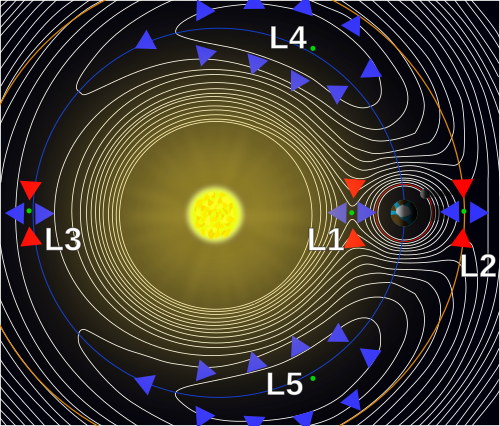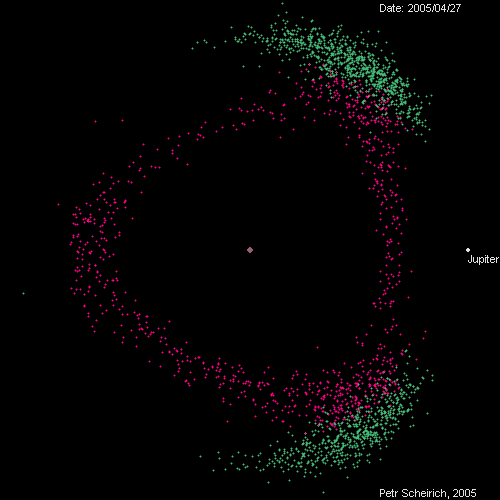Kirkwood gaps are where we see a dearth of asteroids with orbital periods in resonance with Jupiter. In resonance means that the asteroid’s orbital period is a simple ratio of Jupiter’s — like 2:1, 3:1, 5:2. As they line up with Jupiter more often in similar ways, the strong repeated tugs that nudge it out of that orbit.
(The photo is from The Essential Cosmic Perspective, which is a gentle introduction to space.)

When I talked about this on twitter, someone pointed out that there’s a bump, not a gap, at the 2/3 mark – that is, where asteroids are traveling 1.5 times as fast as Jupiter.
I asked ChatGPT, which pointed me towards the Hilda asteroids, which are the asteroids that comprise that bump. You know why they’re there? Because those are the asteroids that visit Jupiter’s orbit at the Sun-Jupiter Lagrange points!
(Photo visualizing Lagrange points from Wikipedia.)

A Sun-Jupiter Lagrange point is a point relative to Jupiter where another body orbiting the Sun is minimally nudged out of its current orbit by the Sun or Jupiter. I don’t understand them beyond this.)
Here are two families of asteroids, visualized by Petr Scheirich: The greens are the Trojans, which have the same period as Jupiter and stay 60 degrees forward or behind (At the L4 and L5 points). The magentas are the Hildas.

All those Hilda specks are in elliptical orbits. Each time they arrive closest to Jupiter’s orbit, it is to visit the next one in the sequence of L5, L4, or L3, as those are 120° degrees apart.
This source says that the elliptical orbit of the Hildas carries them between the main asteroid belt (closer to the Martian orbit than the Jovian one) and near the Jovian orbit, where they meet the more sedate Trojans.
That asteroids in resonance in Jupiter tend to disappear, except for these 1.5x ones that approach a different Lagrange point every time they reach their aphelion – I found that very beautiful!
